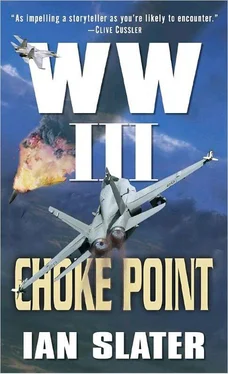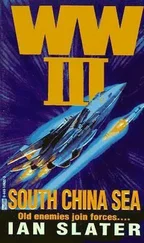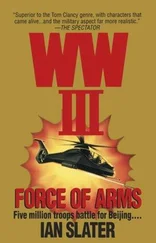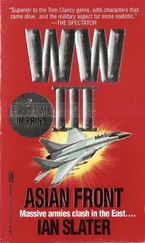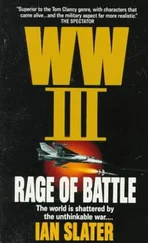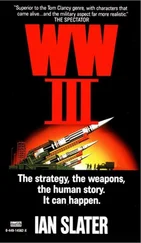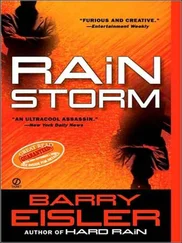In a matter of milliseconds the explosion of the seabed-planted mine had not only ruptured Utah ’s ballast tank, but generated a pulsating white-domed bubble of carbon dioxide and methane gas that struck the aft bulkhead above the prop. The speed of the explosion’s shock waves, excited by the prop’s normal cavitation or bubble-producing motion, created a partial vacuum. The sudden whack of the explosion’s pressure wave, traveling at Mach 4, deformed then oscillated the entire structure of the sub, in effect whipping the boat, ripping bulkheads away from their longitudinal stiffeners, and causing massive flooding.
Now that the integrity of a half-dozen previously watertight compartments was breached, the flooding could not be contained, and thirty-two officers and men in departments aft of the sail drowned within minutes of the roaring deluge invading their home. The encased pipelike housing for the SOSUS “python” was torn asunder from the sub’s flank like some long worm tube, breaking up, its contents of black, oil-encased “hockey puck” microphones spilling into a frenzy of white water. It marked the catastrophic end of one of America’s preeminent warships, a weapons platform that had contained more than twice the firepower of all the ordnance dropped by all combatants in World War II.
Rorke had ordered Beaufort life raft drums released, and Alicia Mayne to be the first out of the sail’s hatch. She’d been through the drill often enough, but actually doing it, hitting the cold, ear-dinning horror of a battering in total darkness, was terrifying. Her body was caught in the vicious vortexes of contrary forces from the sinking boat and the boiling sea, and further battered by debris, her arms flailing, breath failing, her nostrils clogged. Her chest seemed about to explode, and her lips felt as if they were afire in the fierce upstream of acidic effervescence that was now highly poisonous due to the chemical reaction between seawater and the dying sub’s gutted battery compartment.
The resulting greenish-yellow clouds of dirty chlorine that had already suffocated a dozen or more of Rorke’s crew were now visible as a smudge on Darkstar’s routine overflight, the explosion itself heard by the handful of isolated settlements on both the American and Canadian sides of the fifteen-mile-wide strait. Some of the submariners who, in fate’s strange grasp, had popped through the chaos of swirling sea and debris to the surface of the strait, were relatively unharmed. The screaming of others was a terrible testimony to the burns and injuries inflicted by the firespill spreading across the previously black surface of the sea, its flames illuminating hundreds of pieces of debris, the unidentifiable shapes, some afire, floating around and around Alicia and everyone else who’d made it out.
Alicia involuntarily opened her mouth to scream as a corpse, its head all but severed, floating beside the body, bumped into her on the downward slide of a cresting wave. Her mouth, however, made no sound, and instead sucked in the scum of oil and a slippery, cold, choking substance that made her gag. It could have been a mélange of canned or frozen food that had exploded from containers as the Utah imploded from the mine’s pressure wave, but convinced that she’d swallowed human flesh, albeit inadvertently, the thought gripped her with an overwhelming revulsion. “Captain!” she screamed. But all she could hear was the agony of survivors and of the dying, and then a wave crashed into her, pushing her into the burning oil slick.
Through his binoculars high in the Turner ’s island, Admiral Keach, the overall commander of the carrier’s battle group, could see the oil slick moving up and down like a fiery island, illuminating the final seconds of the Utah before she disappeared piecemeal below the heaving crimson-slashed surface of the strait. Keach had already ordered the carrier’s rescue Sea Knight helicopters aloft. Standing firm against the instinctive desire of all his battle group’s sailors to rush to help their stricken comrades from the Utah , Keach ordered all other elements of the battle group to stay where they were until further notice. On Turner ’s bridge, Ensign Myers, though trying to hide his disgust with Keach’s decision, murmured his disapproval.
The admiral took it as a chance to educate the officer as well as to chastise him for not keeping his feelings to himself. “Mr. Myers,” he said. “What would you do as captain of one of the Aegis or destroyers? Go full steam ahead?”
Myers, surprised by Keach’s acute hearing, given the noise of the last helicopter taking off from Turner ’s flight deck, had no time to react before the admiral was answering his own question. “Yes, you’d be the hero and dash ahead to help your fleet buddies. A noble sentiment, Mr. Myers, but what caused Utah to go down? Internal explosion? Torpedo? Friendly fire? A mine?”
The ensign was nonplused.
“Remember the Kursk !” added Keach. “Accidental firing in their own torpedo room.”
Already the Turner ’s sensor arrays were monitoring the air for any radioactive leak from Utah ’s reactor. That would be a double whammy — a lethal cloud of radiation sweeping over the entire battle group plus the enormous catastrophe that would assault the millions of Americans who inhabited the Northwest’s pristine mountains and coasts. What’s more, if the water from the countless streams and rivers that raced down from the high peaks of the Rockies and Cascade ranges to the sea-stack-dotted coast of Washington, Oregon, and northern California were contaminated, most of the western United States would die.
“COMSUBPAC-9 on the scrambler line, sir,” Turner ’s Admiral Bressard informed Battle Group Commander Keach. “I think it’s Admiral Jensen himself.”
Keach took the phone from Bressard, Keach’s tone correct but not noticeably friendly. They had both dated Margaret, and Keach’s ego was as big as any of Turner ’s air wing pilots. He hated losing.
“Admiral,” Jensen told Keach. “I’ve just received a disturbing message from the oceanographic ship Petrel . They sent it down by helo — no encryption capability.”
“What is it?” asked Keach.
“ Petrel reports a possible hostile in the strait.”
Keach was so dumbfounded, all he could say was, “ Utah ’s gone, Admiral. Don’t you know—” He stopped, realizing there was a very good reason Jensen wouldn’t know what had happened to one of his attack subs. The subs didn’t make regular check-ins — such transmissions could immediately give away their position to an enemy.
“I know that …” began Jensen, his voice trailing off in a mumble. Keach was struck by the sudden metamorphosis. What had been the voice of a self-confident commander a moment before had vanished. Jensen was a man on the edge.
“Torpedo or mine, I’d say,” Keach told Jensen, “but could have been internal. Or a hostile. I don’t know.”
There was no response from Jensen, but Keach knew he was still on the line. “I have to go, Admiral,” said Keach, who immediately ordered a warning flashed to every ship in his battle group. The captain of the Aegis cruiser on his left flank asked for confirmation as to whether it was a “mini” or “midget” sub. Keach said that he had already requested confirmation of this in plain language message to the Petrel ’s captain.
All Frank Hall could tell Keach, however, was what Albinski had written on his attack board—“Minisub”—the diver obviously not having enough time to put anything else down before his life was snuffed out.
“What’s wrong?” Margaret asked when Walter walked in, gray-faced, as if he had literally aged overnight.
Читать дальше
